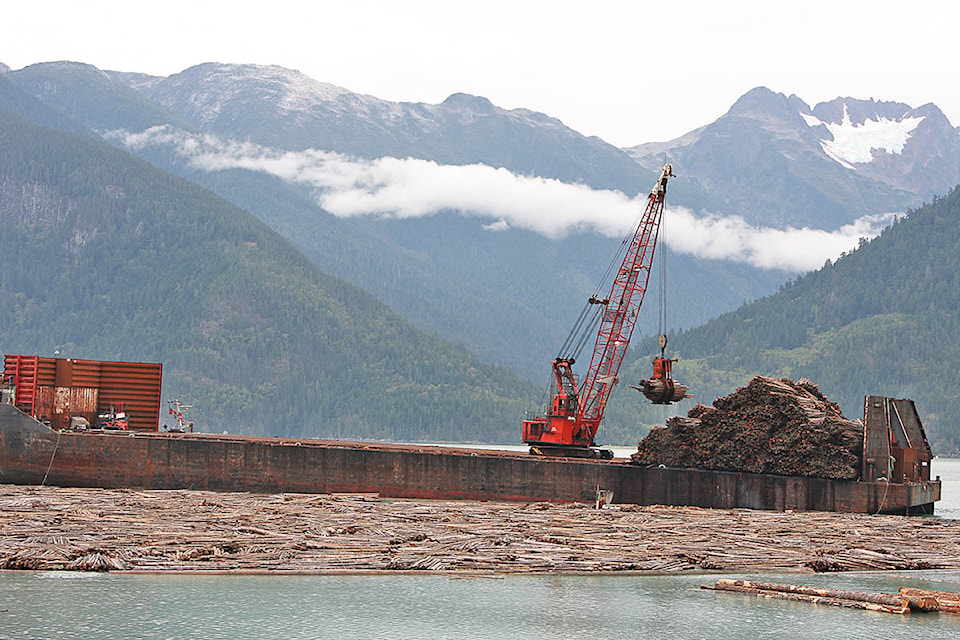A forestry company owned by Ulkatcho (Anahim Lake) First Nation has embarked on a fibre recovery project made possible with funding from Forest Enhancement Society of B.C.
The project will last for three years and kicked off in January 2019, said Stephen James, executive director of West Chilcotin Forest Products (WCFP).
“The West Chilcotin plateau lacks the infrastructure many other areas of our province take for granted,” James said. “Given the distance to markets for our forest products, enhanced utilization of our forest fibre has always been a struggle. With funding from FESBC, we can now start to do our part to fight climate change while at the same time provide much needed employment for our band members.”
Pulp logs of lodgepole pine that would previously have been burned on cutblocks in the traditional territory of Ulkatcho First Nation, are being hauled to Bella Coola where they are loaded onto a barge and are then on to be chipped at Harmac Pacific Pulp mill in Nanaimo.
Read More: Alex Fraser Research Forest gives students hands-on experience
James said logging companies such as Tsi Del Del Enterprises, Waddington Charter and Co. and Dave Jorgenson are active in the area.
WCFP started sawmill operations in 1994, but due to poor markets the mill was last run in 2016. In 2017, WCFP started to market sawlogs to companies in Williams Lake.
The fibre recovery project has created 20 full-time jobs to people from Ulkatcho First Nation and Bella Coola with previous experience in the industry.
“They cannot ship pulp out of Bella Coola January, February, March because of the poor weather conditions,” James said.
Without the FESBC funding the project would not be viable as at this point WCFP is not involved in other forestry work.
“The Ulkatcho First Nation, as an owner of WCFP, very much appreciates the support of the governments of B.C. and Canada,” said James. “The funding they’ve provided through FESBC to assist with fibre utilization is a great benefit to our community and to our environment. The amount of waste that was being burnt prior to this program was a real concern for community members we listened to and this is the result.”
Dave Conly, operations manager of FESBC, said they have funded roughly 50 to 60 similar projects that are underway presently in the province to utilize fibre that would normally be burned.
“We’ve tried to focus on areas where there are opportunities to go the coast as well because the pulp mills along the coast along with all the other pulp mills are having a shortage of fibre right now,” Conly said. “That’s why this West Chilcotin one is really successful because the wood was not economic to move to an Interior pulp and paper mills, but it was with our assistance able to go to the coast.”
Wood fibre closer to Tatla or Redstone would go to Williams Lake or Quesnel, but when it’s further west near Nimpo Lake or Anahim Lake then it makes sense to ‘go over the hill,’ he added.
“So it is a win-win because environmentally it’s reducing emissions that comes from normal logging out there. Secondly, it’s creating employment opportunities for people in the West Chilcotin and they are struggling because they don’t have the infrastructure or the manufacturing base to sell their products easily there.”
Finally, he said, it’s benefitting the coast because the Bella Bella Community Forest is doing the log handling, sorting and bundling for transport on the barges.
Read More: B.C.’s struggling forestry industry needs federal support: Minister Donaldson
Funding from FESBC — $960,000 now for a multi-year approval and another approval of $877,000 later — is meant to cover the difference between what the market is paying on a competitive price on the coast and the cost to deliver the pulp wood, Conly explained.
“It is going to the West Chilcotin to assist in environmental management in terms of fibre recovery, in terms of creating employment opportunities for people that have been displaced and moving fibre to a facility that needs it to keep running as well.”
There have been many challenges for WCFP because so much of what they do is based on primary timber harvesting and if the major sawmills are taking down time like they have been this year, then primary harvesting slows down as well, Conly said.
news@wltribune.com
Like us on Facebook and follow us on Twitter
